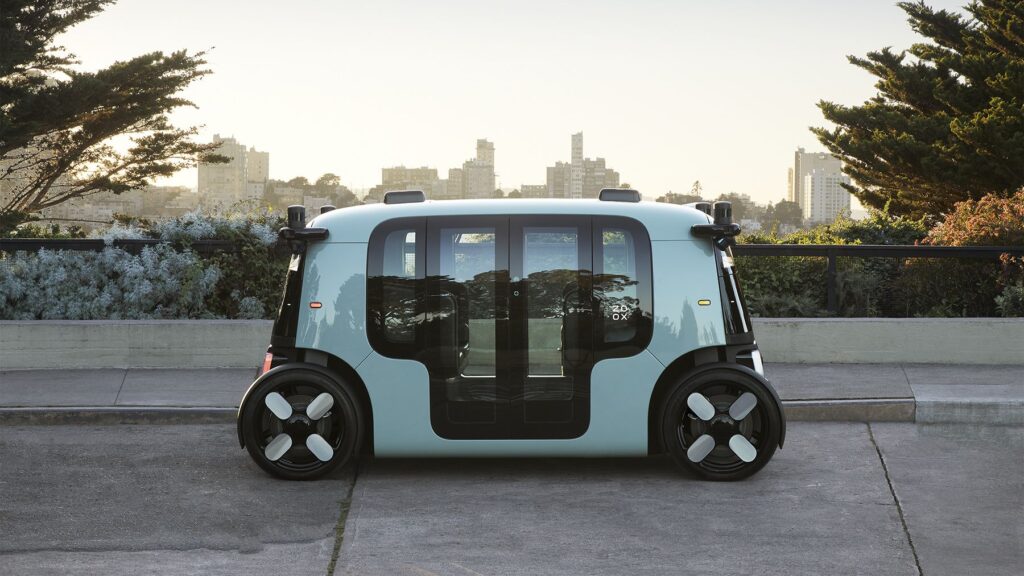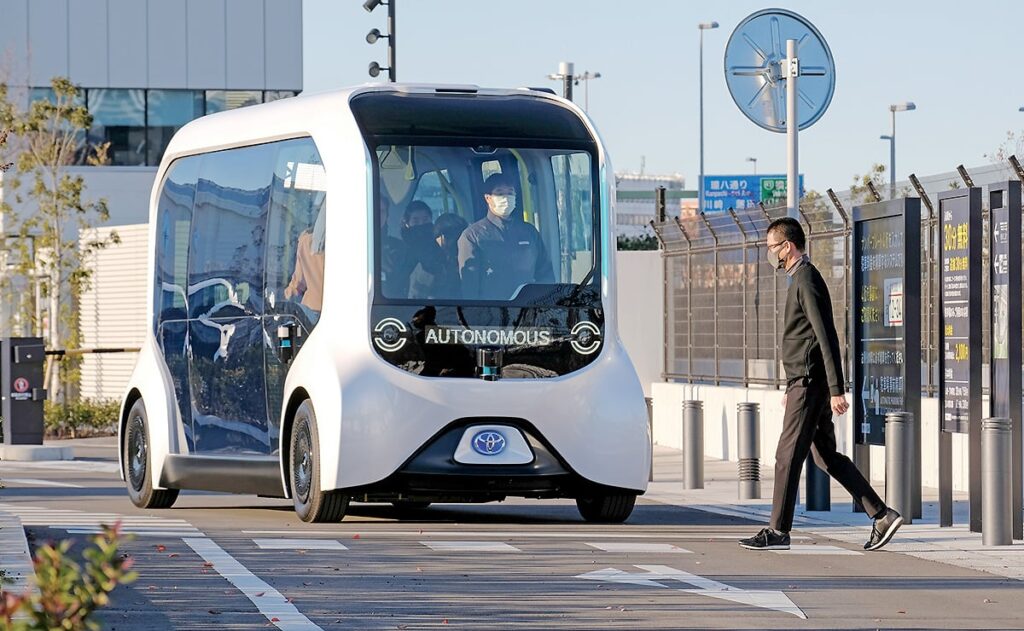The future of transportation is always a hot topic. Especially when it comes to taxis. Enter the Taiwan Self-Driving Gharry. This latest innovation is turning heads and raising questions. It promises to revolutionize how we get around Taiwan’s bustling cities. But is this self-driving marvel really the taxi of tomorrow? That’s what we’ll explore today.
Taiwan has a rich history of adapting to new technology. Traditional taxis have served the nation well for years. Yet, they come with drawbacks. Things like pollution and traffic congestion are everyday issues. The self-driving Gharry aims to solve these problems. It runs on cutting-edge tech. Think lidar sensors and artificial intelligence. These features help it navigate Taiwan’s complex roadways. No human driver is needed.
So, safety is a big concern. The self-driving Gharry uses state-of-the-art systems. It aims to ensure a safe journey for its passengers. The absence of a human driver could cut down on errors. Less room for mistakes means a safer ride, right? But is it ready to take on the role of the traditional taxi? Many factors come into play. They range from legislation to public opinion.
Another major point to consider is the environment. As we all know, climate change is real. Any transportation of the future must be green. The Taiwan Self-Driving Gharry aims to fulfill this role. It focuses on sustainability with low-emission technology. In this blog post, we’ll dive into all these aspects. From safety features to public opinion, we’ll cover it all. We’ll help you decide if the Self-Driving Gharry truly is the taxi of tomorrow. So let’s get started.
What is a Self-Driving Gharry?

A Self-Driving Gharry is a concept that combines the traditional idea of a “gharry,” which is a horse-drawn carriage often used in Asia and Africa, with modern self-driving or autonomous vehicle technology. In the context of Taiwan or any other place adopting this technology, a Self-Driving Gharry would be a taxi or car service that operates without the need for a human driver. This vehicle would use a range of advanced technologies, such as lidar, radar, and machine learning algorithms, to navigate, obey traffic rules, and ensure passenger safety.
Taiwan Self-Driving Gharry marries the cultural significance and traditional concept of a gharry with cutting-edge technological advances. The idea is to offer a more efficient, safe, and potentially more sustainable form of public transportation. Given that they are autonomous, these vehicles could potentially reduce the number of traffic accidents caused by human error, increase fuel efficiency, and offer a reliable form of public transport that operates around the clock.
In a place like Taiwan, with its bustling cities and need for efficient public transportation, a Self-Driving Gharry could serve as an innovative solution to a range of issues, including road congestion, pollution, and the inefficiencies often associated with human-operated taxis or car services.
The Current Taxi Landscape in Taiwan
- Traditional Taxis: These are abundant and can be easily hailed on the street, found at taxi ranks near tourist attractions, shopping centers, and train stations, or booked through phone apps. Most of these taxis are metered, and the drivers usually only speak Mandarin or Taiwanese.
- Ride-Sharing Services: While not as dominant as in some Western countries, ride-sharing services like Uber do exist but operate in a limited or different capacity due to regulatory constraints. For instance, Uber in Taiwan is required to partner with licensed taxi drivers rather than allowing private individuals to offer rides.
- Cost and Payment: Taxis are generally affordable, and many now accept digital payment methods like credit cards or mobile payment services, alongside traditional cash payments.
- Regulations: Taiwan has strict regulations for taxi services, including vehicle inspections, driver qualifications, and fare meters. This regulatory framework is designed to ensure passenger safety and service reliability.
- Challenges: Despite its effectiveness, the current taxi system has some shortcomings, including issues of availability during peak hours or in less populated areas, occasional language barriers for tourists, and concerns about environmental sustainability due to the high number of gas-powered vehicles.
- Efforts for Modernization: To address some of these challenges, there have been initiatives aimed at modernizing the taxi fleet, including trials for electric taxis and the exploration of smart transportation solutions like self-driving vehicles.
The introduction of Taiwan self-driving Gharry would therefore represent a significant shift in the current landscape. Given their potential for efficiency, safety, and sustainability, these autonomous vehicles could provide a compelling alternative to the taxis of today and reshape urban transportation in Taiwan for the years to come.
Rise of the Taiwan Self-Driving Gharry

The emergence of the Taiwan Self-Driving Gharry represents a paradigm shift in the realm of public transportation in Taiwan. Building on the robust tech industry of Taiwan, the development of self-driving Gharries has become the latest buzzword in both the tech community and among policymakers. Here’s how the rise of this innovative form of transportation is taking shape:
Pioneering Companies
Local and international tech giants are throwing their hats into the ring. These companies are collaborating with automotive experts to develop advanced algorithms, machine learning models, and sensor technologies to make the self-driving Gharry a reality.
Public and Private Collaboration
Government bodies are partnering with private companies to facilitate testing and research. Special zones have been designated for test runs of self-driving Gharries, complete with various road conditions and traffic scenarios.
Regulatory Adaptations
Taiwan is proactively updating its transportation regulations to accommodate self-driving vehicles. This includes redefining road rules, setting safety standards, and amending insurance and liability policies to cover these new types of vehicles.
Public Reception
Initial trials and demonstrations have generated a mix of curiosity and skepticism among the public. While the younger generation appears more open to adopting this new form of transit, older individuals remain cautious but curious.
Safety Measures
As safety is a prime concern, the developers are incorporating high-end safety features like Lidar, real-time mapping, and emergency override functions. The goal is to make the Taiwan self-driving Gharry as safe, if not safer, than traditional human-operated vehicles.
Environmental Benefits
One of the selling points of self-driving Gharries is their potential for environmental sustainability. Many are electric or hybrid, thus reducing the carbon footprint and aligning with Taiwan’s green initiatives.
Economic Implications
The rise of the self-driving Gharry could have far-reaching economic effects. It may create new jobs in tech and engineering while transforming existing roles in the taxi and transportation sectors.
Future Projections
Experts predict that self-driving Gharries could become a common sight on Taiwan’s roads in the coming years, provided that ongoing tests prove their safety and efficiency. The government is also looking at integrating these vehicles into existing public transportation systems.
The rise of the Taiwan Self-Driving Gharry could be the next big leap in Taiwan’s journey toward modern, efficient, and sustainable public transportation. The world watches eagerly as Taiwan sets the stage for the future of urban commuting.
Safety First: How Secure is a Taiwan Self-Driving Gharry?
Safety is a paramount concern when it comes to the adoption of any new transportation technology, and the Taiwan Self-Driving Gharry is no exception. A combination of cutting-edge hardware and software ensures that these autonomous vehicles are designed with safety at the forefront.
Advanced Sensor Technology
One of the first lines of defense in ensuring safety is the deployment of a variety of sensors. Lidar (Light Detection and Ranging) is a prominent feature, providing a 360-degree view around the vehicle. It helps the car understand its environment, detect obstacles, and make real-time decisions.
Real-Time Mapping and Navigation
To navigate Taiwan’s diverse and often complex roadways, real-time mapping and GPS technologies are employed. These systems allow the Taiwan self-driving Gharry to understand traffic conditions, obey traffic rules, and adapt to various road scenarios, thus enhancing safety.
Emergency Override Functions
Even though the goal is complete autonomy, these vehicles often come equipped with emergency override functions. These can either be activated by a remote human operator or automatically in case the system detects something it cannot handle. This serves as an extra layer of safety.
Rigorous Testing
Before hitting the streets, self-driving Gharries undergo a battery of tests under various conditions. These tests are designed to challenge the vehicle’s ability to react to unexpected situations, like sudden stops, erratic drivers, or pedestrian movements.
Artificial Intelligence and Machine Learning
Machine learning algorithms are at the heart of decision-making in these vehicles. Over time, the AI gets better at making decisions, learning from vast amounts of data collected during its trips. This makes the car smarter and, ideally, safer with each drive.
Human Factors and Education
As these cars roll out, educating the public on how to interact with them is crucial. Whether it’s understanding how to hail one or what to do if you encounter one on the road, public awareness can contribute to overall safety.
Regulatory Oversight
The government plays a vital role in ensuring the safety of self-driving Gharries. Strict regulations govern not just the technology but also the deployment and operational aspects. Regular audits and reviews are expected to maintain a high level of safety.
Cybersecurity Measures
In an age where hacking is a real threat, robust cybersecurity measures are in place to prevent unauthorized access to the vehicle’s operating systems.
While nothing can be 100% safe, the Taiwan Self-Driving Gharry aims to meet and even exceed current safety standards for public transportation. The goal is to integrate seamlessly into Taiwan’s existing transport landscape while offering a secure, efficient, and modern option for urban mobility.
User Experience: From Hailing to Arrival

When it comes to public transportation, user experience plays a vital role in determining the success or failure of a new initiative. The Taiwan Self-Driving Gharry is designed to offer a seamless, user-friendly experience from the moment you hail the vehicle to the moment you arrive at your destination. Here’s how:
The Hailing Process
Gone are the days of standing on a street corner with your arm extended, hoping a taxi will spot you. The Taiwan Self-Driving Gharry can be hailed through a specialized app on your smartphone. With just a few taps, you set your pickup location and destination, making the process incredibly convenient.
Waiting and Arrival Notifications
Once you’ve requested a ride, real-time tracking allows you to see exactly when your self-driving Gharry will arrive. Notifications alert you when the car is close, so you’re not left guessing or constantly checking your phone.
Boarding and Initial Experience
As you approach the vehicle, facial recognition or a QR code scan ensures that the Gharry picks up the right passenger. Once inside, the car offers a clean, spacious, and comfortable environment. Touchscreen panels allow you to adjust settings like air conditioning and music to your preference.
The Journey
The absence of a driver doesn’t mean a lack of information. A digital dashboard keeps you updated on your route, estimated time of arrival, and any stops along the way. Voice-activated commands can allow you to make adjustments to the route if needed.
In-Ride Entertainment and Productivity
Whether you want to catch up on news, listen to music, or even hold a video conference, the Gharry aims to offer a range of in-ride entertainment and productivity features. Connectivity is a given, with high-speed Wi-Fi enabling various online activities.
Environmental Impact: Is it Greener?
The rise of the Taiwan Self-Driving Gharry offers a compelling lens through which to examine the environmental impact of public transportation options. At a time when global efforts are concentrated on reducing carbon footprints and promoting sustainability, the environmental performance of these new vehicles is a topic of high interest.
Fuel Efficiency and Emissions
Many self-driving Gharries are built to operate on electric or hybrid engines, which are inherently more fuel-efficient than traditional internal combustion engines. Electric Gharries produce zero tailpipe emissions, contributing to improved air quality in urban areas.
Optimized Routing
Self-driving vehicles are known for their ability to calculate the most efficient routes, thereby reducing the distance traveled and, consequently, energy consumption. Optimized routing can contribute to lower emissions per passenger-mile traveled compared to traditional taxis.
Reduced Traffic Congestion
The smart algorithms used by self-driving vehicles can reduce the stop-and-go driving that contributes to traffic congestion. Less congestion means less idling, which in turn reduces emissions and fuel consumption.
Energy-Efficient Driving
Unlike human drivers, who may accelerate or brake aggressively, self-driving vehicles are programmed for smooth and energy-efficient driving. This style of driving is not just safe but also minimizes fuel or energy consumption.
Vehicle Maintenance and Lifecycle
Self-driving cars are designed to be more predictive in their maintenance needs, reducing the chances of emergency repairs that could be more resource-intensive. Plus, electric and hybrid cars often have fewer moving parts than their gas counterparts, potentially extending their lifespan and reducing waste.
Eco-Friendly Manufacturing
As the market for Taiwan self-driving Gharry expands, there will be a growing incentive to manufacture these vehicles using environmentally friendly materials and processes. This could include the use of recycled materials, renewable energy in manufacturing facilities, and other green practices.
Renewable Energy Sources
For electric self-driving Gharries, the source of the electricity matters. The environmental benefits are magnified if the electricity used to charge the vehicles comes from renewable sources like solar or wind energy.
Shared Mobility
Self-driving Gharries can also be more easily integrated into shared mobility services, where multiple passengers share a ride. This model would reduce the number of vehicles on the road, contributing to decreased emissions.
Policy and Regulations
As self-driving Gharries become more prevalent, government policies could mandate certain environmental standards, further pushing the industry toward greener solutions.
Public Opinion: What Do the Locals Think?

The introduction of Taiwan Self-Driving Gharry has stirred a variety of opinions among local residents. The public sentiment is a mix of excitement, skepticism, and curiosity, reflecting the complex interplay of cultural, technological, and practical factors that influence people’s perceptions of autonomous vehicles.
Younger generations seem particularly keen on embracing this new mode of transportation. They cite the innovative technology, potential for convenience, and environmental benefits as compelling reasons to support the self-driving Gharry. For tech-savvy millennials and Gen Zers, the Gharry fits into a larger narrative of smart cities and integrated, efficient public transportation systems. The convenience of hailing a ride with a smartphone app and the promise of a smooth, predictable ride are highly appealing to these groups.
However, among the older population, there’s a noticeable sense of caution. While not entirely opposed to the concept, many express concerns about safety, job displacement for traditional taxi drivers, and the reliability of technology. They wonder how these vehicles will respond in unpredictable situations and whether they will be as aware of local road norms and unspoken “rules of the road” as human drivers. For them, the transition to fully automated vehicles raises questions that go beyond mere technological capability.
Business owners have their own set of perspectives. Taxi companies see the self-driving Gharry as both a threat and an opportunity. Some are considering how to adapt their own fleets and integrate self-driving technology. Meanwhile, businesses related to tourism see a lot of potentials to provide tourists with an easy and novel way to explore the country.
FAQ’s
How do you hail a Taiwan Self-Driving Gharry?
You can hail a self-driving Gharry using a specialized smartphone app. Once booked, the app will show the vehicle’s ETA and allow real-time tracking.
Can I choose my route in a self-driving Gharry?
While the car will select the most efficient route, you can make adjustments using voice-activated commands or through the in-car touchscreen panel.
Is the Taiwan Self-Driving Gharry safe?
Yes, these vehicles come equipped with advanced sensors, real-time mapping, and emergency override functions. They also undergo rigorous testing to ensure safety.
What is the environmental impact of these vehicles?
Many self-driving Gharries are electric or hybrid, making them more fuel-efficient and eco-friendly than traditional taxis. They also employ optimized routing to reduce emissions.
What do locals think about the Taiwan self-driving Gharry?
Public opinion is varied. Younger generations are generally more excited about the technology, while older residents have safety and job concerns. Businesses see it as both a threat and an opportunity.
The Road Ahead: Navigating Taiwan’s Self-Driving Future
In a nutshell, the Taiwan Self-Driving Gharry is more than a technological marvel. It promises to redefine urban transport. It aims to make rides safer. It wants to make travel efficient. It even has its eye on reducing pollution. But challenges remain. Safety concerns are real. Public opinion is mixed. Yet the potential is enormous. As technology evolves, so will these self-driving vehicles. They may just become the norm for urban transport in Taiwan. Time will tell. For now, the self-driving Gharry is certainly a ride worth watching. And maybe one day, it’ll be the ride we’ve all been waiting for.
